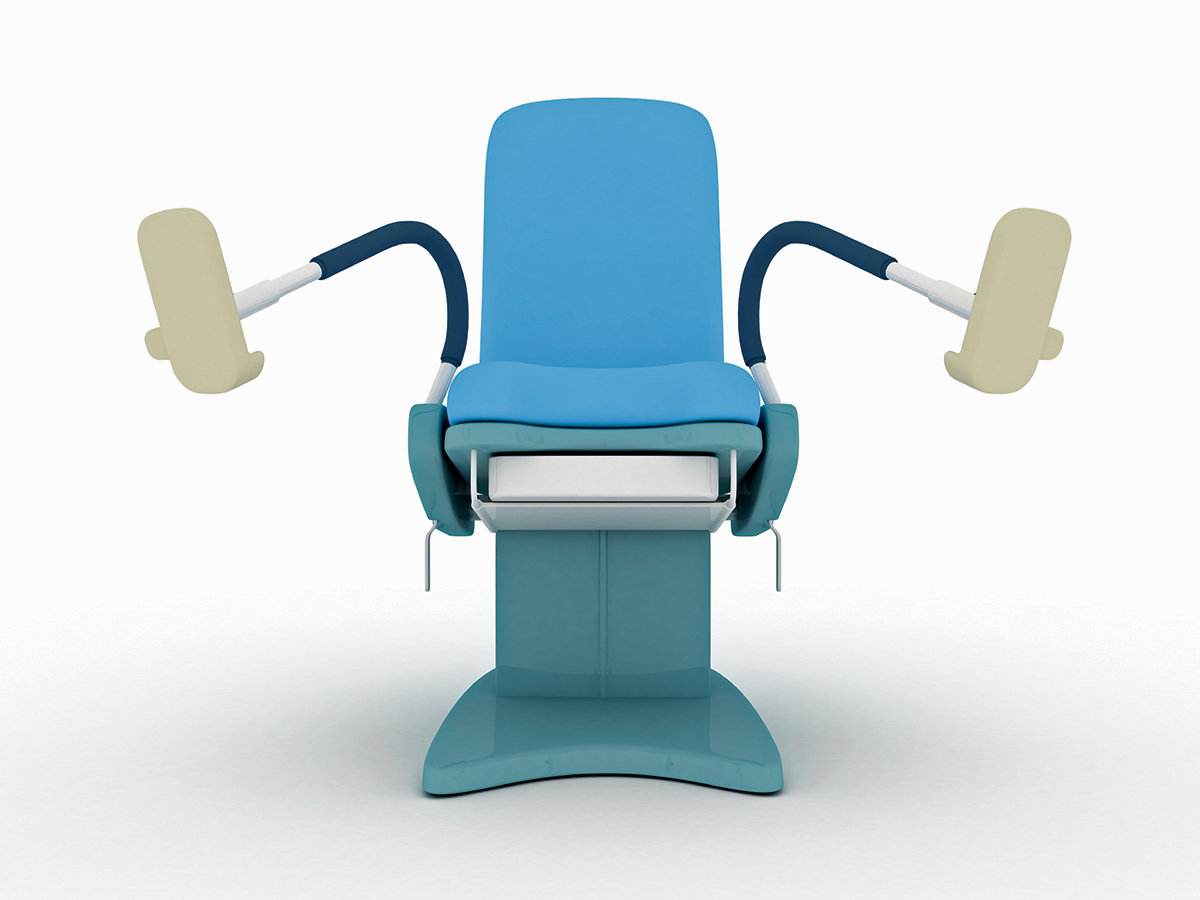 Pretty much every woman remembers her first pelvic exam, frequently with some embarrassment. How can you help your daughter understand — and make it through — this procedure? And when should she get one?
Pretty much every woman remembers her first pelvic exam, frequently with some embarrassment. How can you help your daughter understand — and make it through — this procedure? And when should she get one?
First things first, though: What is a pelvic exam? The terms can be confusing, so let’s define them.
Reproductive health visit: This visit concentrates on a woman’s reproductive and sexual health. It always includes taking a thorough history, including menstrual history, sexual activity and contraceptives used, if any; sexually transmitted disease (STD) prevention, if the patient is sexually active or intends to be; and a discussion of any concerns the woman might have, especially if she has symptoms. This visit may include a breast and general body exam as well as a pelvic exam, or it may just be informational and not include an exam at all.
Pelvic exam: This potential component of a reproductive or other health visit enables providers to evaluate a woman’s pelvic and reproductive organs to look for problems and encourage health maintenance. Many websites explain what is done and why (a good example for teens: youngwomenshealth.org/pelvicinfo.html). Pelvic exams are often helpful if a woman has symptoms such as a rash, discharge, menstrual abnormalities or pain; to test for STDs; to administer a Pap smear; or to start certain contraceptives.
Pap smear: Many women use this term interchangeably with pelvic exam, but the two are different. This test for cervical cancer is obtained with a cotton swab during the pelvic exam. Previously, Pap smears were considered necessary for women on an annual basis, but recent information has changed that opinion. In 2012, the U.S. Preventive Services Task Force recommended that women get a Pap smear every three to five years, provided the test shows healthy results.
Why an exam is a good idea
Are pelvic exams even necessary? If so, when? Although there is some controversy among medical specialists about who needs an exam and how often, current recommendations state that, in the absence of symptoms or problems, young women need not have their first pelvic before the age of 21, and then every three years for most. Tests for the more common STDs can be done with a simple urine sample or a self-administered vaginal swab, so that’s no longer an essential reason for a visit to the doctor.
There are, however, two less tangible but still important reasons why a young woman might choose to get a pelvic exam. In my experience as an adolescent medicine specialist who has performed many reproductive health evaluations on teens, I’ve found that this visit is possibly most valuable as an educational tool: to clear up misconceptions, instruct on anatomy and function, discuss sexuality and sexual activity, and review the patient’s knowledge of pregnancy and STD prevention. Another reason is to reassure teens that they are normal — this might be their only opportunity to ask questions they’d ordinarily bottle up.
What might be on your mind
Here are some questions I’ve heard from parents regarding the pelvic exam and reproductive health visit — and some answers!
Who should administer my daughter’s first pelvic exam? Although many women go to a gynecologist for this exam, pelvics are performed equally well by pediatricians, family physicians, nurse practitioners and internists — so it’s really a matter of finding a person with whom your daughter will feel comfortable. If there’s a reason for her to have an exam as a teen, it may be more important to consider which provider has the most experience with teen care.
As for gender, I’ve spent many years training all types of providers, male and female, in performing reproductive health visits for teens. Although some girls say they feel better talking with a female provider, both genders can provide excellent care. Male providers generally have a chaperone present: a female nurse, a medical assistant or a parent.
Should I go with her? Surveys have asked teenage girls this question. In general, younger girls want their mothers to accompany them to the provider’s office and be in the room during the exam. Older teens might prefer that their mothers step outside so they can be totally honest in a confidential discussion with the provider. To avoid an awkward scene at the provider’s office, discuss this with your daughter before the visit.
Will an exam before she is sexually active possibly break the hymen? No, just like tampons would not be expected to do so.
Will bringing my daughter to an exam give her the message that I’m encouraging her to be sexually active? No, there is no evidence that providing good preventive care and health education promotes behaviors such as sexual activity. In fact, it’s the opposite — many studies tell us that girls who are better informed about their bodies and knowledgeable about sexuality are less likely to engage in risky behaviors. The worst place for a woman to have her first pelvic exam is the emergency room, though sometimes circumstances make that necessary. Far better is at least a reproductive health visit with a primary care provider, even if a pelvic exam is not included.
What can I do to help prepare my daughter? Parents should be their children’s primary sexuality educators, so it’s essential to have discussions about body parts, hygiene and sexuality with your daughter from the start. Also share your thoughts about your own reproductive care — not to scare her, but to let her know what you learned and what you felt was valuable. (If you’d like help kick-starting the conversation, there are many books and videos for young adults that offer additional information; see sidebar for ideas.)
Most important, offer lots of encouragement and reassurance that she is taking an important step toward understanding her body, maintaining her health and having respect for her own sexuality as a growing woman.
Recommended reading
Here’s a selection of the many books available on puberty and sexuality. Visit greatconversations.com for more suggestions.
For all preteens:
Will Puberty Last My Whole Life?, Julie Metzger and Robert Lehman
It’s So Amazing!, Robie Harris
Sex, Puberty and All That Stuff, Jacqui Bailey
What’s Happening to Me?, Peter Mayle
For girls:
My Body, My Self for Girls, Lynda Madaras and Area Madaras
Period.: A Girl’s Guide, JoAnn Loulan et al
The Feelings Book, Lynda Madison
For boys:
My Body, My Self for Boys, Lynda Madaras and Area Madaras
Boy’s Guide to Becoming a Teen, American Medical Association
What’s Going on Down There?, Karen Gravelle et al
For parents:
Wise-Minded Parenting, Laura Kastner and Kristen Russell
Talk to Me First, Deborah Roffman
Girls Will Be Girls, JoAnn Deak
Real Boys, William Pollack











